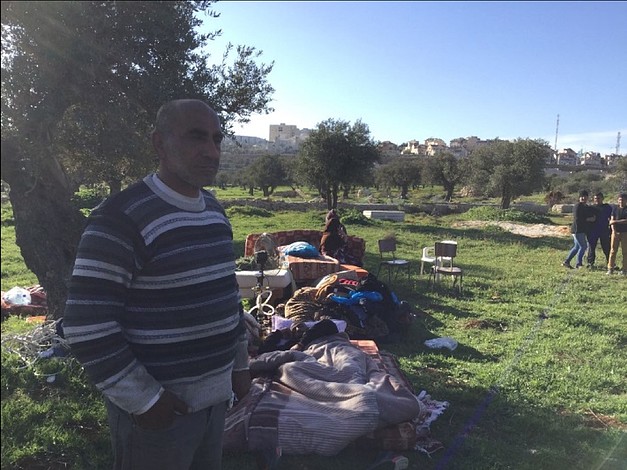West Bank demolitions and displacement | March 2018
Highlights
- Less structures demolished and people displaced in Area C
- No donor-funded structures demolished
- EU-funded school in a vulnerable Area C community at heightened risk of demolition
Overview
The relatively low level of destruction of Palestinian property observed in the first two months of 2018, further decreased in March, with a total of 28 structures demolished/seized/sealed, compared to a monthly average of 35 structures in 2017. This brings the total number of structures demolished/seized during the first quarter of 2018 to 97, representing around 50 and 20 per cent of the structures demolished/seized in the equivalent quarters of 2017 and 2016, respectively.
 Almost 30 per cent of the structures targeted in the first quarter of the year were residential, and the rest livelihood-related structures or community infrastructure. Of note, nearly a third of the affected structures during this period have been seized, rather than demolished, up from only 10 per cent during 2017.
Almost 30 per cent of the structures targeted in the first quarter of the year were residential, and the rest livelihood-related structures or community infrastructure. Of note, nearly a third of the affected structures during this period have been seized, rather than demolished, up from only 10 per cent during 2017.
Twenty-three of this month’s structures were demolished, seized or (in one case) sealed off due to the lack of building permits in Area C and East Jerusalem, and an additional structure, in Area A, was sealed off on punitive grounds.
Seventeen of the structures targeted (about 70 per cent) were in East Jerusalem, where, despite the overall decline, demolitions remain at the same high level as in 2017 and 2016. Of them, seven were residences, including three that were demolished or sealed by their Palestinian owners to avoid high fines. The largest incident took place in the community of Al Wata, near the Gilo checkpoint, where the Israeli authorities demolished two homes and five commercial and livelihood structures, displacing 13 people.
In Area C, the Israeli authorities demolished six structures in five separate incidents, the lowest number of Palestinian structures demolished in Area C since June 2017. In one incident in the herding community of Susiya, in Hebron, the Israeli authorities seized a residential tent displacing one family. Part of the community is at risk of forcible transfer, with an upcoming hearing at the Israeli Supreme Court to be held in May.
None of the structures was donor-funded assistance, although four EU-funded structures in a community in the Jordan Valley received a stop-work order. Overall, during the first quarter of 2018, 14 donor-funded structures have been demolished/seized, representing a 82-90 per cent decline compared to the same quarters in 2017 (78 structures) and 2016 (136 structures).
Of concern, in late March, the Israeli authorities requested the Israeli Supreme Court to dismiss a petition filed by the Al Muntar Bedouin community (Ramallah), against the demolition of its only school, and to remove an interim court order preventing the demolition. A decision on the case is pending. The school, made of structures and equipment funded by the EU, began to operate in mid-2017 serving children between 1st and 6th grades. This is one of the 46 Palestinian Bedouin communities in the central West Bank at risk of forcible transfer due to the coercive environment exerted on them.
Charts and tables with additional figures are available in the full version of this report.









